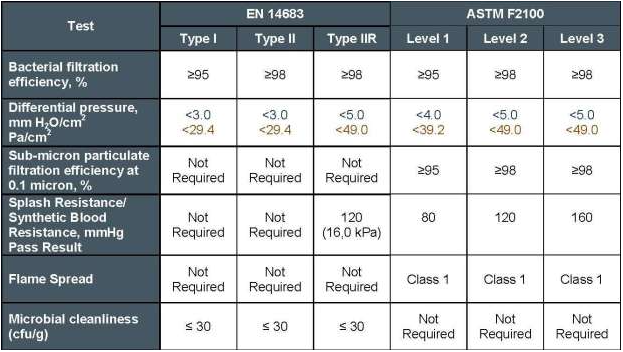BFE BACTERIAL FILTRATION EFFICIENCY TEST
The European Standardization Committee (CEN) has worked and published a standard to harmonize the Bacterial Filtration Efficiency (BFE) test requirements for medical face masks (EN 14683) with equivalent committee requirements (ASTM F2101) in the USA. The aim was to update the standard and align the preconditioning parameters in both Europe and the USA, so manufacturers had to test their face masks only once to meet both requirements. The good news is that the CEN committee has recently released its latest revision, which meets these requirements of the EN 14683 standard.
The Bacterial Filtration Efficiency (BFE) test is done on filtration materials, fabrics, covers and devices designed to provide protection. It is a measure of the resistance of a material to the penetration of bacteria.
Bacterial Filtration Efficiency or BFE is a measure of the resistance of a material to bacteria penetration. The results are reported as percent productivity and are related to the fabric's ability to resist bacterial penetration. Higher numbers in this test indicate better barrier efficiency.

Table 1: EN14683: Test Requirements and Performance Requirements by Type in 2014 and Level Barrier in ASTM F2100-11
ASTM F2101-19 Standard Test Method for Evaluating Bacterial Filtration Efficiency (BFE) of Medical Facial Mask Materials
This test method is used to measure the bacterial filtration efficiency (BFE) of medical face mask materials using the ratio of upstream bacterial difficulty to downstream residue concentration to determine the filtration efficiency of medical face mask materials.
This test method is a quantitative method that allows determination of filtration efficiency for medical face mask materials. The maximum filtration efficiency that can be determined with this method is 99,9%.
This test method does not apply to all forms or conditions of biological aerosol exposure. Users of the test method should review the exposure modes of the employees and evaluate the suitability of the method for specific applications.
This test method treats medical face mask materials as protective clothing but does not evaluate materials for legal approval as a respirator. If the user needs respiratory protection, a NIOSH certified respirator should be used. Relatively high bacterial filtration efficiency measurements for a given medical face mask material do not guarantee that the user is protected from biological aerosols, because this test method primarily evaluates the performance of composite materials used in making the medical face mask, design, compatibility or face sealing properties.
This standard concerns medical devices and is recognized for supporting scientific and technical value and / or existing regulatory policies.
[Rec # 2101-14] FDA recognition of ASTM F6-335 will replace ASTM F2101-19 [Rec # 6-428]. The FDA will accept declarations of conformity to support pre-marketing submissions to [Rec # 27-2020] by 6 December 335. Declarations of conformity to [Rec # 6-335] will not be accepted after this transition period.
When developing ASTM F2100-11, the organization tests the material used to make medical face masks in five performance metrics. Based on the test scores, ASTM assigns a numerical score for the barrier performance of the material:
Level 1 - for low risk of liquid exposure
Level 2 - for moderate risk of fluid exposure
Level 3 - for high risk of liquid exposure
Other performance criteria and related tests of masks:
Liquid Resistance - Test ASTM F1862
This test evaluates the resistance of a medical face mask to the penetration of synthetic blood in a small volume (~ 80 mL) at a high speed (120 mmHg, 160 mmHg or 2 mmHg). The mask passes or fails based on visual evidence of synthetic blood penetration.
Breathability - Test MIL-M-36954 C: ΔP
This test determines the resistance of the face mask to airflow. A controlled flow of air is passed through the mask and the pressure before and after is measured. The pressure difference is divided on the surface of the sample (in cm2). A lower breathing resistance indicates a better level of comfort for the user.
Bacterial Filtration (BFE) - Test ASTM F2101
This test measures the percentage of bacteria larger than 3 microns filtered by the mask. The fighting material used is Staphylococcus aureus.
Particle Filtration (PFE) - Test ASTM F2299
This test measures the percentage of particles larger than 1 micron filtered by the mask. The loading material used consists of latex aerosol concentrations in a controlled air flow chamber.
Flammability - Test 16 CFR Part 1610: Flame Spread
This test exposes the face mask material to a flame and measures the time it takes for the flame to advance the material from a distance of 127 mm (5 inches). Class 1 means that the material exhibits normal flammability and is acceptable for use in clothing.
ASTM F2100-11: Standard Specification for Performance of Materials Used in Medical Facial Masks


